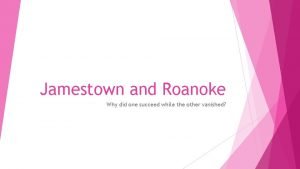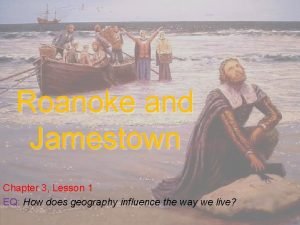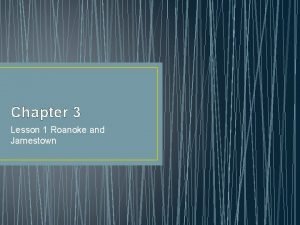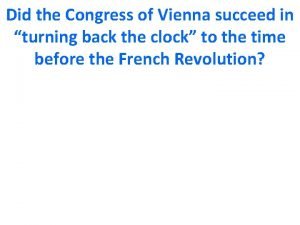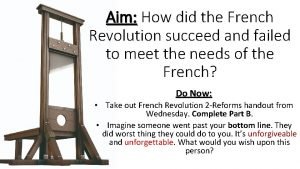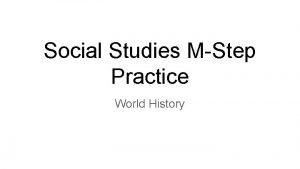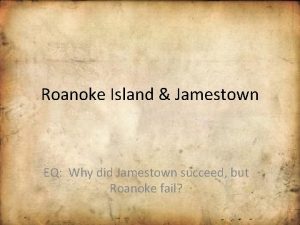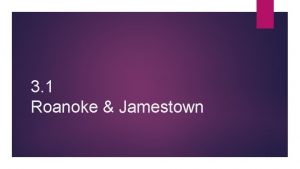Jamestown and Roanoke Why did one succeed while






- Slides: 6

Jamestown and Roanoke Why did one succeed while the other vanished?

The Mystery of Roanoke The success of Spain's colonies in the Americas did not go unnoticed. • 1584 England's Queen Elizabeth gave Sir Walter Raleigh the right to claim land in North America. (This was NOT the first attempt to start a colony in North America. ) • Raleigh decided on a place called Roanoke Island. • island lies off the coast of what is now North Carolina. Raleigh sent settlers to Roanoke Island twice. • The first group arrived in 1585. • Their colony, however, did not survive. After suffering through a difficult winter, the colonists gave up and returned to England. • Second group arrived in 1587 led by John White. • John White returns to England for a time period, when he returned to Roanoke, White found his colony deserted. • The only clue he found was a tree with the word Croatoan carved on it. • The Roanoke colonists were never seen again.

Success at Jamestown • failure at Roanoke discouraged the English from settling in North America. • 1606. king, James I. wanted to renew England's quest for a colony in North America. • Several merchants pressed him for a charter—a document that granted the right to form a colony.

The Virginia Company was a joint-stock company: in which investors bought shares, or part ownership. Investors bought shares hoping the company would make money and that they would share in the profits. James I granted a charter to the Virginia Company of London. • December 1606, the company sent 144 settlers in three ships to build a new colony in North America. • Arrived April 1607, the ships entered Chesapeake Bay. • They sailed up a river flowing into the bay. The colonists named the river the James and their new settlement Jamestown to honor their king.

Jamestown Survives The colonists did not find gold or riches in Virginia. • Instead they faced severe hardships, including disease and hunger. • colony survived its first two years in part because of 27 -year-old Captain John Smith. • Smith forced the settlers to work. • He also built ties with—and got food from—the local Powhatan people • • Late 1609, Smith was injured and had to return to England. colony struggled. The Powhatan stopped providing food. winter of 1609– 1610 was called “the starving time. “ • More colonists arrived to replace those who had died. • The colonists also found a way to make money for the investors. –tobacco

The colony of Virginia began to expand. • Relations with the Powhatan improved after a colonist, John Rolfe, married the chief's daughter, Pocahontas. (She is real! She did not marry John White however…) • The Virginia Company sent women to Jamestown. • marriage and children became a part of life in the colony. • Virginia Company began giving a headright - or land grant of 50 acres to settlers who paid their own way to the colony. • The headright system helped persuade people to come to Jamestown. • chance to own land lured many settlers to Virginia and gave them a reason to work hard. The Virginia Company also gave the colonists the right to take part in their own government. • 1619 land-owning male colonists cast ballots for burgesses - or representatives. • burgesses helped make laws for the colony. • The House of Burgesses was the first legislature in North America elected by the people.
